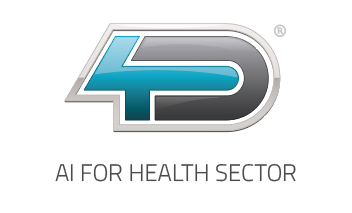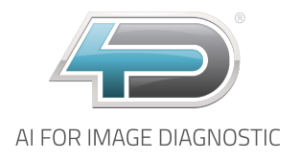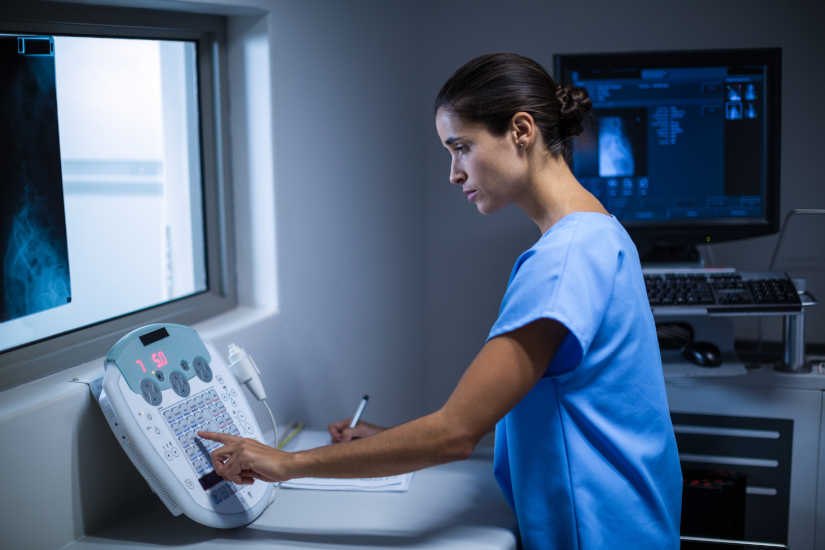
by Luis Daniel Fernádez | Dec 13, 2024 | Medical equipment
The technology has had a significant impact on the healthcare system, especially in the radiology area. In recent years, one of the most relevant changes following the advent of the Internet has been the use of computerized systems in the field of image diagnosis. This has allowed the development of a digital imaging department where medical information can be managed and stored conveniently and securely.
In a digital imaging department, we can distinguish three fundamental tools: the PACS system, the RIS system and the HIS system. In the following article, we analyze what the PACS system is, how it works and its relationship with the RIS and HIS system.
What is the PACS system in radiology?
The term PACS stands for Picture Archiving and Communication System, which refers to Image Archiving and Communication System. This is a computer software used in the radiology area for the following purposes store, manage, present and share medical images and diagnostic procedure reports electronically.
Before the advent of the PACS system in radiology, the images generated after diagnostic examinations were stored in a physical format, mainly as radiographic films. Therefore, from the time the medical test was performed, there was a long process until the final image was obtained. With digitization, it is now possible to resort to a AI software for the different medical teams to obtain an accurate faster and more efficient access to informationwhich will allow optimize workflow in clinical practice.
How does the PACS system work?
A PACS system consists of a series of mechanical and electronic components which are connected to each other by a copper or fiber optic communication network. Specifically, we can differentiate between four main components:
- Image acquisition hardware
- Workstations for image interpretation and review
- Servers for storage and transmission of images
- Network for data transmission
All these elements work in an integrated manner to allow medical images to be captured, stored, distributed and displayed digitally. Through the use of this network, the graphic information generated in different studies, such as a CT scan, is transmitted to the magnetic resonance imaging o TAC.
How does this process unfold?
First of all, data from the system servers is passed to the archiving drives. Subsequently, they are distributed to the stations where radiological physicians review the generated medical images and also to the teleradiology serverswhich allow access to the archive through the Internet.
With a digital radiology PACS system, you can view images remotely from any medical department, office or externally. To do so, health care personnel have special identification codes which allows them to access diagnostic tests for each patient.
The DICOM medical imaging communication standard
For information and images to flow through the PACS system components, it is necessary to comply with the DICOM medical image communication standard. DICOM stands for Digital Imaging and Communications in Medicine and is a standard for the communication of medical images. standard for digital storage and transmission of medical images and related patient information.
It is responsible for define the file format and structure and, in turn, includes a communications protocol to facilitate connectivity between medical devices and systems. However, it should be noted that the majority of modern devices and medical equipment current DICOM images are produced.
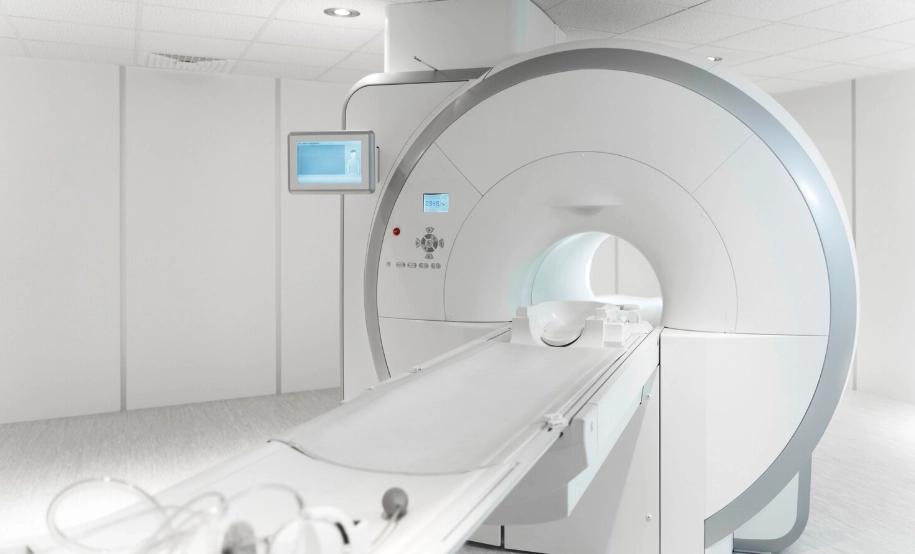
Advantages of using a PACS system in radiology
We analyze the main advantages offered by a PACS system in the management of radiological images:
Improved workflow in radiology departments
Radiologists and medical teams involved in the diagnostic imaging process can access and review digital images from any workstation on the hospital's network or remotely through the web server. This allows rapid consultation of studies and collaboration between physicians and specialists.
Error reduction
As the format of medical images is no longer physical, eliminating the possibility of duplicate diagnoses and also reduces both the risk of loss as the damage of the generated medical images.
Integration with other IT systems
One of the main advantages of the PACS system is that it allows the integration with other IT systems that can be used in health careThe RIS (Radiological Information System) and HIS (Hospital Management Software).
Capacity to store large volumes of data
Not only is it essential for clinical management and patient care, being able to store large volumes of medical imaging data is a key aspect for research and education in the area of health and medicine. In this way, researchers can access image databases for studies and students in training can use many of the images as educational material.
More accurate and detailed diagnosis
The use of the PACS system provides a more detailed reading of the diagnoses. This is mainly because the images are reviewed on high-resolution monitors and can be manipulated more accurately, which helps to detect abnormalities present in the image more quickly and accurately.
Saving time and resources
Another of its advantages is that it offers a time saving and a decrease in the workload of the staff.The cost of printing X-rays and other radiological elements was also reduced. At the same time, waiting times and resources at the hospital level are reduced.
Relationship between the PACS, RIS and HIS system
PACS, RIS and HIS are three systems key components in the digital health informatics ecosystem. Their interrelation is essential for the efficient functioning of the healthcare services of any clinic, health center or hospital. While the PACS system in radiology is used to manage, store and share images of the different diagnostic imaging procedures, the RIS and HIS system have other functions. What is each used for and what is the relationship between them?
The RIS system
The RIS system or Radiology Information System, is the program that runs the digital radiology department. It is a software that contains all the information of the radiology area and hospitals, thus enabling manage information and processes related to diagnostic imaging services.
Functions performed
- Scheduling of appointments and studies
- Order generation
- Recording of results with the generated medical images
- Workflow management in the radiology department
The HIS system
As for the Hospital Information System (HIS), it is a system of hospital information system. By using it, all the data are stored in the data related to the management and administration of a hospital. It is designed to manage all areas involved in the operation of a hospital from a single platform.
Functions performed
- Management and scheduling of medical appointments
- Patient care: Administration of patients' medical records and results of medical examinations performed.
- Human Resources
- Billing
- Monitoring the quality of medical care
Interaction of PACS, RIS and HIS systems
- HISThe central system that coordinates and stores all patient information in a clinic or hospital facility, including demographic, clinical and financial data.
- RISIt communicates with the HIS system to obtain relevant patient information and to manage the radiology area. It is used to schedule radiological procedures requested from other areas of the hospital.
- PACSRIS-PAC: Works hand in hand with RIS to store and manage the medical images generated by the requested studies. The RIS-PAC interaction allows the report to be presented in both systems so that each report appears linked to the images of the study performed.
In conclusion, a PACS system is a fundamental tool in the radiology area to be able to store and manage medical images digitally. All this helps to improve healthcare and promote faster, more detailed and accurate clinical diagnosis.
If you need more information about our imaging solutions, just contact us and our staff will give you personalized advice.
Contact
BIbliography
Clínica Universidad de Navarra (n. d.). PACS. Medical dictionary. Retrieved from
https://www.cun.es/diccionario-medico/terminos/pacs
Ochoa, P. J., Murillo, M. R., & Torres, J. A. (2004). PACS system (picture archiving and transmission system). Anales de Radiología de México, 3(3), 153-162. https://www.analesderadiologiamexico.com/previos/ARM%202004%20Vol.%203/ARM_04_3_3_Julio-Septiembre/arm_04_3_3_153-162.pdf
López-Arroyo, A., Villarreal-García, A. J., & López-Arroyo, S. (2005). The DICOM format and PACS systems in medical imaging. Gaceta Médica de México, 141(5), 477-485. Retrieved from https://www.scielo.org.mx/pdf/gmm/v141n5/v141n5a11.pdf
Clinic Cloud (n. d.). DICOM format: what it is and how this standard works in medical imaging. Retrieved from https://clinic-cloud.com/blog/formato-dicom-que-es-estandar-imagenes-medicas
Luis Daniel Fernandez Perez
Director of Diagximag. Distributor of medical imaging equipment and solutions.

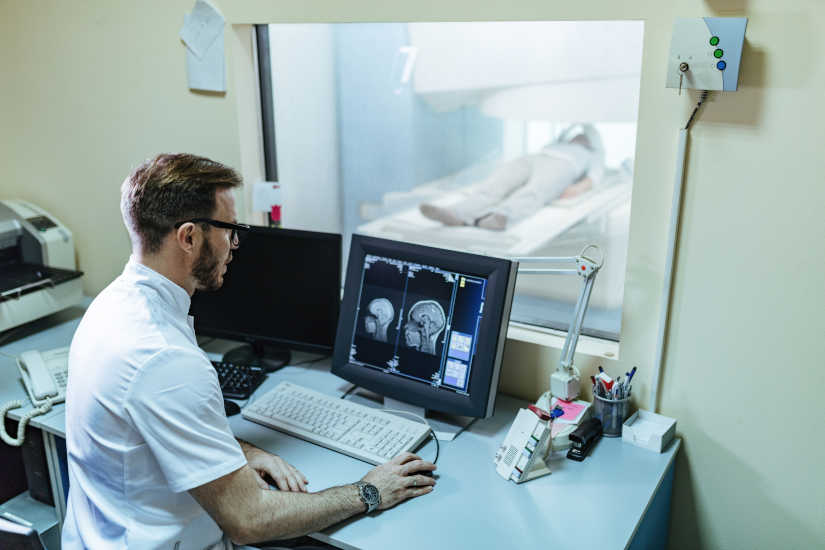
by Luis Daniel Fernádez | Nov 25, 2024 | Medical equipment
Technology is becoming increasingly important when it comes to storing and managing different data and resources. In the field of medicine, we can highlight the RIS management system for diagnostic imaging. This is a type of specialized software used in the radiology area and in other medical fields to manage information and processes related to the services provided by the image diagnosis. In the following article, we analyze how it works, its main features and advantages.
What is the RIS management system for diagnostic imaging?
The RIS management system is responsible for automating the management of medical imaging data and information. It works like a hospital information system (HIS), but the main difference is that it is specifically tailored to radiology departments in clinics, hospitals and healthcare centers.
It is called RIS (Radiology Information System) and represents a key part of the IT infrastructure in radiology departments, clinics and hospitals. A radiodiagnostic software is a tool that includes a multitude of functions in a single centralized platformfrom manage patient data and history, store medical images and create customized reports. Therefore, it stands out as a solution that helps to improve workflows and optimize medical imaging processes.
Main features and functions of the RIS system
How does the RIS system work? We analyze the main features and functionalities it offers:
Patient registration
Firstly, the RIS system is used to register the patients to be attended. For this purpose, the different data to create your medical record: the personal information of contact, the medical history and the insurance information.
Appointment scheduling
Once the patients are registered in the system, they can be scheduling appointments for diagnostic imaging tests. From radiographs, computed tomography or CAT scans, magnetic resonancesetc. The software organizes and prioritizes orders according to urgency, equipment and personnel availabilityoptimizing the management of time and available resources.
Storage and tracking of medical images
Radiologists can attach the results of the images generated after the medical tests directly to the patient's fileThis speeds up the availability of the studies. At the same time, it also allows include data related to medical examinationssuch as reports and diagnostic information.
Patient follow-up and test management
The RIS system makes it possible to perform the follow-up of the patient's treatment and of the examinations carried out through the system. In this way, the complete medical history can be accessed and patient information can be checked for necessary updates during the diagnostic process.
Workflow tracking
Allows you to track each stage of the process, from the initial request to the generation of the final reportThe system ensures efficient and uninterrupted execution. Another aspect to highlight is that improves collaboration between different medical teams who work in patient treatment, such as radiologists, technicians and medical specialists.
Report generation
Radiologists can writing and sharing diagnostic reports based on processed images. The reports are securely stored and made available to physicians and also to authorized patients. The results are generated digitally, but can also be sent by e-mail and fax, as well as exported for printing on paper. Using the RIS system, different statistical reports can be produced, either for specific examinations, individual patients or groups of patients.
Data analysis and statistics
The system produces reports and statistics on workflows, volumes of studies performed and equipment performanceThe results of this study will facilitate administrative decision making and increase the efficiency of diagnostic imaging services.
Data storage and security
All information, including images, reports, and financial records, is stored in secure databases. This helps to ensure the compliance with medical and privacy regulationssuch as GDPR in Europe or HIPAA in the United States.
Billing and administration
Another of its functions is that automates the creation of invoices related to exams performed. By integrating payment and insurance records, financial management processes can be simplified.
What are the advantages of RIS for diagnostic imaging?
The RIS management system offers numerous advantages, mainly in terms of efficiency, accuracy and quality of service in the field of radiology. We explain its main benefits in the medical field:
Workflow optimization
Allows you to manage all stages of medical diagnosisfrom the request to the delivery of reports. This helps to improve organization and reduce delays that may arise. At the same time, automated appointment scheduling ensures that the efficient use of time and resources.
2. Accuracy and security of data
Reduces the occurrence of errors by centralizing patient information, as test results are located on a single platform. On the other hand, by complying with data security regulations such as HIPAA and GDPR, the medical information included in the RIS system is kept confidential.The patient's data is processed correctly.
3. Quick access to information
Physicians, radiologists and technicians have immediate access to patient records and studiesThis streamlines clinical decision making. And not only that, the system usually includes a integration with cloud-based solutions. In this way, the medical team can remotely access information from anywhere, anytime.
4. Integration with other medical systems
It works in conjunction with other medical systems: both PACS and HIS. On the one hand, the PACS system is used to manage the long-term storage of both images and patient information, and HIS systems are hospital information software used in the management of clinics and hospitals. Therefore, the integration of these systems into the RIS system makes it possible to create a complete healthcare ecosystem.
5. Improved patient care
Offers a agile, comprehensive and seamless patient care experience. Among its advantages is the reduction of waiting times in treatment planning and diagnosis, the results are available more quickly and reduce the administrative burden to be carried out by professionals and patients.
6. Cost reduction
In addition to optimizing the work process, helps reduce costs and increase profitability. It eliminates the need to create paper documentation and reduces administrative errors, thus optimizing billing processes and scheduling of medical services.
In summary, the RIS management system is an essential tool for optimizing administrative and clinical processes in radiology and other areas of diagnostic imaging. The use of radiodiagnostic software helps to increase efficiency, service quality and patient care.
Luis Daniel Fernandez Perez
Director of Diagximag. Distributor of medical imaging equipment and solutions.

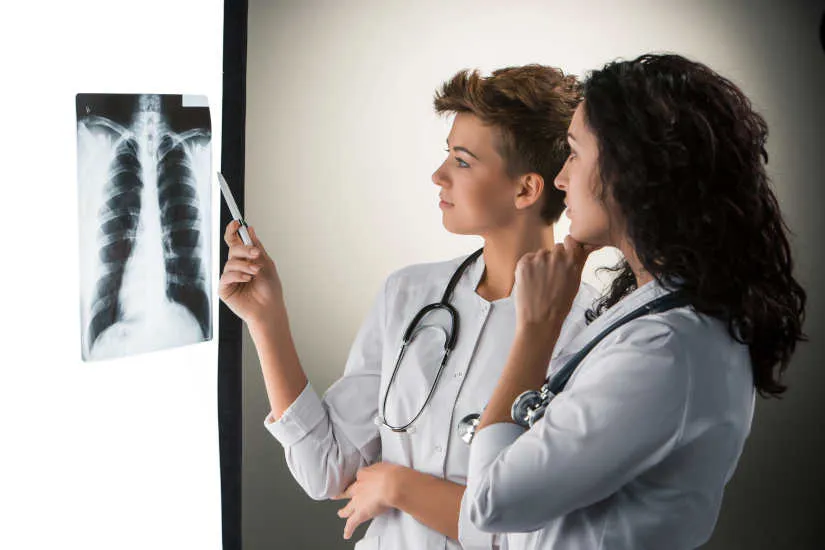
by 4D Medical | Nov 21, 2024 | Medical equipment
The X-rays are a form of electromagnetic radiation, similar to visible light. This medical technique was created in 1895 by the physicist Wilhem Conrad Röntgen, whose findings led to the development of radiological practice. It is an essential method in the medical field and is used by means of specific equipment: the X-ray machines. X-rays are able to penetrate matter, so they can pass through most objects and tissues, including the human body. Once through the body, the X-rays reach a radiographic plate or computer where digital images, known as radiographs, are generated.
The radiographs are a type of diagnostic imaging and are used to analyze the different internal areas of the organism. The images that are produced are displayed in different shades of black and white.since each tissue allows a certain amount of X-ray beams to pass through it.. Dense materials, such as bones and metals, appear black, while muscles and fatty elements appear in shades of gray. In some types of X-rays, a contrast medium, such as iodine or barium, is introduced so that tissues can be visualized in the images in greater detail.
X-rays can be used aloneas in the equipment of conventional radiology, or combined with other techniquessuch as computed tomography or CT. In the following article, we explain how X-rays work, what they are used for and the types of X-ray machines that exist.
How do X-ray machines and X-rays work?
For imaging in conventional radiography, the patient stands behind a screen that blocks the radiation and operates the X-ray equipment. During the procedure, the body part to be analyzed is placed between the X-ray source and an X-ray detector.
The X-rays passing through the tissues are recorded on a radiation detector plate. Y, depending on the density of the tissues, will pass through a certain amount of radiation.The image produced shows the different degrees of density of the internal structures of the organism. The higher the tissue density, the more X-rays pass through and the whiter the image generated.How are the different tissues displayed?
- Metal has a white color.
- Bone see almost white.
- Fat, muscle and fluids are shown with shadows, in different shades of gray.
- Air and gas are displayed in black color.
Main uses of X-rays
X-rays have multiple uses in the field of medicine. X-rays are used for the diagnosis of diseases and injuries, as a support technique to perform surgical procedures, as a therapeutic treatment, in minimally invasive procedures and for the early detection of diseases. Below, we discuss the different procedures where X-ray technology is used to diagnose and treat diseases:
Diagnostic radiography
X-rays are used as diagnostic test to detect bone fractures, tumors and abnormal masses, pneumonia, etc.as well as lesions, calcifications, foreign objects, intestinal obstructions and dental problems.
2. CT or computed tomography
It combines the X-ray technique together with the computed tomography or CAT scan to create cross-sectional images of the body. Subsequently, can be combined to generate a three dimensional image X-ray images. CT images are more detailed than those of a conventional X-ray and allow professionals to analyze the internal structures of the body from various angles.
Mammography
Breast radiography is used to detecting breast disorders, mainly breast cancer. Breast tissue is sensitive to radiation, so special mammography units are used to minimize radiation exposure. digital radiology equipment.
4. Fluoroscopy
X-rays and a fluorescent screen are used together. to obtain real-time images of the movement inside the body. It is also used to analyze diagnostic processes, such as following the path of a contrast agent.
One of the uses of fluoroscopy is to analyze heart movement and beats. For this, radiographic contrast agents are used to view the blood flow in the heart muscle, blood vessels and organs. This type of technique is also used to guiding an internally threaded catheter during cardiac angioplastya minimally invasive procedure to open clogged arteries that supply blood to the heart.
5. Therapeutic use of radiotherapy for the treatment of cancer.
Another use of X-rays is as therapeutic technique to destroy tumors and cancer cells. The dose of radiation used to treat cancer is higher than the radiation used in diagnostic tests. This type of therapeutic radiation can come from X-ray equipment or radioactive material. that is placed in the body or bloodstream.
Types of X-ray machines
What types of X-ray machines are available on the market? We can differentiate the following medical equipment using this technology:
Conventional X-ray machines
They are the most basic equipment and are designed to obtain static images of the internal structures of the body. It is used for diagnose bone fractures, pulmonary evaluation by means of a chest X-ray and the identification of dental problems.
Portable X-ray machines
This type of X-ray machines are lightweight, compact and portableThe products can be easily transported. Used in emergencies and rural areasand to care for patients who cannot be transferred.
Digital X-ray machines
They are replacing film plates with digital detectors to develop a real-time diagnostics and the generated images have a high resolution and are of higher quality.
Fluoroscopy systems
These are specific devices that use X-ray technology for the following purposes observing dynamic processes in the body in real time. These machines are used for minimally invasive surgical procedures, gastrointestinal studies and orthopedic diagnostics.
Mammography machines
They are designed for perform breast tissue studies. They are essential for the screening for tumors, abnormalities and breast cancer. In this case, the X-ray emission is low energy in order to better analyze the soft tissues that make up the breasts.
Computed tomography or CT equipment
These units are designed with a advanced system that uses X-rays to create detailed, three-dimensional images of the body. It is highly accurate and is used to evaluate internal injuries, tumors, as well as brain, thoracic, abdominal and extremity studies.
C-arc
These X-ray machines are equipped with a C-shaped arm que emits the X-rays from one end and captures digital images at the other end. C-arc is used for image-guided surgical procedures and in orthopedic and cardiovascular interventions. It offers a deeper analysis, since the area to be analyzed can be visualized from different angles.
Dental X-ray machines
This type of device is designed for capture images of the teeth and various maxillofacial structures. On the one hand, there are the intraoral equipment which capture images of the inside of the mouth and, on the other hand, there are the extraoral equipment which include panoramic systems that take full images of the jaw and mouth. They are mainly used for the diagnosis of caries, periodontal diseases and orthodontic planning.
X-ray machines for bone densitometry
X-rays are used to measuring bone mineral densityand, therefore used to diagnose osteoporosis and perform the follow-up of bone loss treatment.
In conclusion, X-rays are a very complete technique that has a large number of uses in the health field and, depending on each medical need, there is specific X-ray equipment to analyze, study and treat various diseases.
Kiko Ramos
CEO of 4D Médica. Expert in marketing and distribution of medical equipment.

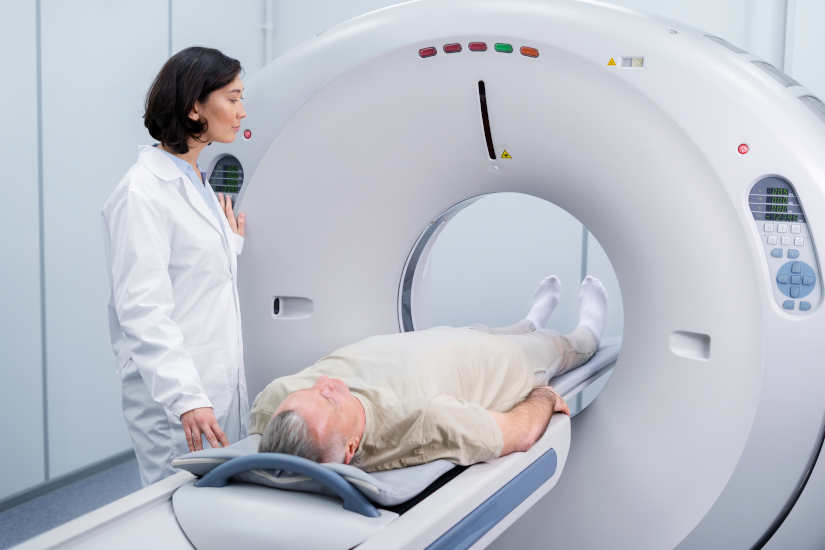
by 4D Medical | Nov 14, 2024 | Medical equipment
The computed tomographyalso known as computed axial tomography, also known as computed tomography, or TAChas become one of the most popular techniques of image diagnosis most commonly used. It is a procedure that uses special X-ray equipment and advanced computers to obtain three-dimensional images with different slices of the body.
Since its clinical introduction in 1971, it has undergone successive advances that have allowed its application in different fields of medicine. At present, computed tomography is used to diagnose disorders such as cancer, cardiovascular conditions, infectious processes, trauma and diseases of the locomotor apparatus. In the following article, we analyze how it works, what it is used for and the origin and evolution of this diagnostic test.
How does a CAT scan work?
In order to perform this diagnostic imaging, the following is used computed axial tomography system which incorporates a X-ray scanners generating three-dimensional images with different cuts of the interior of the organism.
These slices are called tomographic images and are used for the following purposes study various internal regions of the bodyThe CT scanner can be used to view everything from organs, bones and soft tissues to blood vessels. In contrast to radiography, which only provides a two-dimensional representation, the CT scan makes it possible to observe the three-dimensional images. This makes it possible to analyze tissues with greater detail and clarity. Another aspect to note is that the CT scanner utilizes a X-ray source and has a ionizing radiation higher than that of an X-ray.
During the procedure, the CT scanner rotates around the circular opening of a threaded structure called Gantry. The patient lies on a bed and is inserted inside the scanner so that the specialist can analyze the tissues. The X-ray detectors are located in front of the X-ray source and generate a series of images through different cuts. Subsequently, are transmitted to a computer where the interior of the organism can be visualized and analyzed.
CT contrast medium
As with X-rays, dense structures within the body, such as bones, are easy to image. However, soft tissues are more difficult to image. For this reason, contrast media have been developed that increase the visibility of tissues during X-ray or CT scans. Contain a set of substances that are safe for patients and allow the X-rays to be stopped, so that the organs will be seen in greater detail in the test.
For example, to examine the circulatory system, an iodine-based intravenous contrast medium is injected into the bloodstream to illuminate the blood vessels.
What is CT used for?
CT is used as a clinical diagnostic test, in follow-up studies to analyze the patient's health status, in radiotherapy treatment planning, and even for screening asymptomatic individuals with specific risk factors. A computed tomography scan creates detailed images of the bodywhich include the brain, thorax, spine and abdomen.. Specifically, we can highlight the following uses:
- To help diagnose the presence of a cancer or tumor.. It is one of the most widely used techniques to screen for the presence of colorectal cancer and lung cancer.
- Obtain information about the stage of a cancer.
- Determine if a cancer reacts to treatment.
- To detect the return or recurrence of a tumor.
- Diagnose an infection.
- Support technique to guide a biopsy procedure.
- To guide some local treatmentssuch as cryotherapy, radiofrequency ablation and radioactive seed implantation.
- Radiotherapy planning external beam or surgery.
- Study the blood vessels.
When did computed tomography come into being?
Computed tomography was introduced in 1971 as an X-ray modality. which allowed axial images of the brain to be obtained, so it was a clinical method used specifically in the neuroradiology area. Its evolution has made CT a versatile imaging technique with which three-dimensional images of any anatomical area can be obtained. Currently, it is a diagnostic imaging equipment with a wide range of diagnostic capabilities. wide range of medical applications in oncology, vascular radiology, cardiology, traumatology or interventional radiology.
Evolution: From its beginnings to the present day
At 1971The following were developed first CT scanners for clinical use. During these early years, the EMI-scanner was used, with which brain data could be obtained and the calculation time per image was about 7 minutes in total. Soon after, scanners applicable to any part of the body were developed. At 1973In the early 1990s, the axial scannerswhose equipment had only one single row of X-ray detectors. Subsequently, it was when the helical or spiral scannerswhich incorporated multiple detector rowsits clinical use had a significant impact on the widely used and are the ones currently in use.
Current CT equipment: Main improvements and types
The evolution of the medical equipment has made it possible to obtain significant improvements. In today's systems, the image quality and offer both a better quality of life and a better spatial resolution as a low contrast resolution. In addition, nowadays, the following are also available CT scanners designed for specific clinical applications. Among them, we can highlight:
- Specific CT equipment for radiotherapy treatment planning: These scanners offer a larger aperture diameter than usual, thus allowing a study with a wider field of view. Thus, the images generated have greater detail and clarity.
- Hybrid equipment integrating CT scanners with other imaging techniquesHybrid solutions are now available. Among them, we can highlight the CT scanner incorporating a positron emission tomograph (PET) or a single photon emission tomograph (SPECT).
- Specialized scanners for new indications in diagnostic imagingDual-source" CT scanners, which are equipped with two X-ray tubes, have been developed, as well as "volumetric" CT scanners, which incorporate up to 320 detector rows, making it possible to obtain complete data on the organs analyzed in a single use.
Main risks
CT scans can diagnose serious diseases and conditions such as cancer, hemorrhage or blood clots. An early diagnosis is essential in order to find a solution as soon as possible and save lives. However, it is true that it is a test that presents some risks that are important to discuss:
X-Ray
One of the main risks of CT is that it utilizes the X-rayswhich produce ionizing radiation. This type of radiation can have certain effects on the organism and it is a risk that increases with the number of exposures to which a person is subjected. However, the risk of developing cancer by the radiation emitted by the X-rays is generally low.
Use in pregnant women and children
In the case of pregnant women, there are no risks for the baby if the area of the body being imaged is not the abdomen or pelvis. But, medical professionals often perform tests that do not use radiation, such as the magnetic resonance imaging or ultrasound. As for the childrenare more sensitive to ionizing radiationas they have a longer life expectancy and the risk of developing cancer may be higher compared to adults.
Reactions to contrast medium
On the other hand, another aspect to be highlighted is that some patients may have allergic reactions to contrast medium and, in very specific cases, temporary renal insufficiency. In this situation, intravenous contrast media should not be administered to patients with abnormal renal function.
As we have been able to analyze, computed tomography or CT is very useful for detailed and precise analysis of certain internal tissues and organs. By means of X-rays, certain conditions or serious diseases can be studied, which is why it is essential for clinical diagnosis and its application in different fields of medicine.
Kiko Ramos
CEO of 4D Médica. Expert in marketing and distribution of medical equipment.

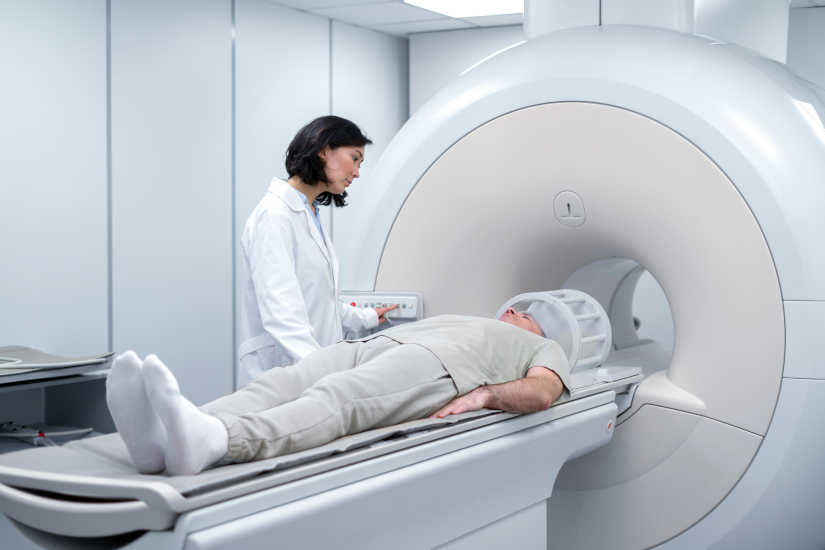
by 4D Medical | Oct 31, 2024 | Medical equipment
The magnetic resonance imagingMRI, also known by its acronym MRI, is a technique of image diagnosis noninvasive MRI that produces three-dimensional anatomical images. MRI uses powerful magnets and radiofrequency waves which allow the creation of detailed images of the organs, tissues and internal structures of the body. Unlike other methods such as radiography or computed axial tomography (CT), magnetic resonance imaging (MRI) can be used to create detailed images of organs, tissues and structures inside the body. does not use ionizing radiation or X-raysIt is a safe, painless medical test that does not cause any harm to the patient.
This is one of the most widely used techniques for the production of medical diagnostics, analyze the different tissues and check for any disease, injury or abnormality.. MRI is used by health professionals to examine certain parts of the body and to study the differences existing between healthy and unhealthy tissuesas well as tissues that present abnormal conditions. MRI allows the creation of detailed three-dimensional images to examine organs such as the brain, spine, joints such as the knee, shoulder, hip, wrist and ankle; the abdomen, pelvic region, breasts, blood vessels and heart, among other regions.
To perform a MRI examinationis used, a magnetic resonance medical equipment. In this procedure, the patient is placed inside an MRI scanner. We can define it as a large circular apparatus which is open at both ends. Once the patient is inside the MRI equipment, a series of signals and radio waves are produced and detected by a receiver inside the device. Subsequently, the cross-sectional images of tissues that are visualized through a computer.
What is this process like and what does MRI detect? In the following article, we explain the origin of this medical technique and how it works, as well as its advantages and limitations.
Origin of magnetic resonance imaging
In 1946, Felix Bloch and Edward Purcell independently discovered the magnetic resonance phenomenonfor which they were awarded the Nobel Prize in Physics in 1952. But, actually, its development as a chemical and physical molecular analysis procedure took place in the period between 1950 and 1970. Beginning in 1971, Raymond Damadian demonstrated that MRI relaxation times differed between healthy and tumor tissues, which led scientists to begin to study this technique for the diagnosis of diseases.
At the same time, in 1973 Hounsfield introduced another of today's most widely used medical techniques: computed tomography (CT), which uses X-rays. The success of TAC The results showed that hospitals were willing to invest in the development of new diagnostic imaging equipment, which also drove the development of MRI. In the same year, Paul Lauterbur obtained the first magnetic resonance image, using a back projection technique similar to that of computed axial tomography.
As of 1980sthe gradual implementation of MRI in clinical practiceto the current situation. Today, magnetic resonance imaging is one of the most widely used diagnostic imaging techniques.
How does MRI work?
The human body is composed mainly of water and fat, so that hydrogen atoms account for 63% of the total number of atoms in the body. The hydrogen nucleuswhich consists of a proton, is used in magnetic resonance imaging because it acts like a powerful magnet that generates a magnetic field around the patient's body. MRI is a diagnostic imaging method based on the absorption and emission of energy in the form of a set of radiofrequency signals within the electromagnetic radiation spectrum. The radiofrequency used in MRI produces frequencies of between 15 and 80 megahertz, making it a non-ionizing radiation that is harmless to the body.
In an MRI exam, the patient is placed inside an MRI scanner. magnetic resonance scanner which produces radio waves that interact with the protons, generating a series of radio frequency signals that are detected by a receiver inside the device. All these signals emitted and detected by the scanner's antenna are processed in a computer, where they are detailed images of the fabrics and inside the organism that allow the medical diagnosis to be made.
Specifically, a MRI equipment consists of the following elements:
- External magnet
- Magnetic field gradients
- Radio frequency transmitter
- Radio frequency receiving antennas
- Computer
How is an MRI exam performed?
To perform an MRI exam, a medical MRI machine is used, where the patient is introduced into a large device that has a circular shape and is open at the ends. This procedure is performed in a special room housing the MRI system or scanner. A member of the MRI staff accompanies the patient into the room, where he/she will be asked to lie down on a padded table and then be introduced into the machine to begin the MRI diagnosis.
Before the test
The majority of diagnoses have a duration between 15 and 45 minutesdepending on the part of the body to be tested and the number of images needed. Before the test, the person must partially or completely undress and is provided with a gown that has no buttons or metal fasteners. It is important to leave all metal objects and other items that could be affected by the magnetic field outside the MRI room. For example, keys, jewelry, cell phones, credit cards or watches.
During the test
It is important that the patient remains still and relaxed.. In some examinations, an intravenous injection of a contrast material called gadolinium to obtain a clearer image of the area to be examined. To do this, at the beginning of the medical test, a nurse will place an intravenous line into a vein in the patient's arm or hand using a small needle.
On the other hand, it should be noted that the magnetic resonance system can produce certain loud noises during the procedure. To prevent any problems associated with noise, earplugs are provided. For the duration of the diagnosis, the patient will be monitored at all times and will be able to communicate with a medical professional via an intercom.
After the test
Once you have completed the exam, images will be reviewed by a radiologistwho will subsequently inform the physician of the results of the MRI examination.
MRI in medical practice
Magnetic resonance imaging is a procedure used to study the differences that exist between healthy and unhealthy tissues, as well as other regions of the human body that present abnormal conditions. Nowadays, it is one of the most widely used diagnostic imaging techniques and it allows for detect a large number of diseases and abnormalities in virtually all regions of the body:
- HeadCentral nervous system, orbit, face and skull.
- Neck.
- SpineSpinal cord, meninges, bone spine and intervertebral discs.
- Chestespecially at the cardiovascular level.
- Abdomenliver, biliary tract, spleen, pancreas, urinary tract, genital tract and pelvis.
- Large joints and extremities.
What does MRI detect?
MRI is often prioritized over CT scanning when the physician needs to have more detail about the soft tissues. For example, it helps to obtain images of abnormalities in the brain, spinal cord, muscles and liver. It is also very useful in identifying tumors in these tissues. MRI has the following clinical applications:
- Morphological applicationsDefinition of congenital anomalies, traumatic pathology, detection and extension of tumors,
degenerative diseases, vascular pathology, inflammatory processes and infectious pathology.
- Functional applicationsThese are functional brain MRI studies and functional cardiac studies.
- Tissue analysis applicationsMRI spectroscopy, chemical shift studies, perfusion studies and diffusion studies.
This diagnostic technique is also used to analyze other types of conditions and as an alternative to other procedures that present greater risks:
- Measuring the presence of certain molecules in the brain that distinguish a tumor from an abscess.
- Identify alterations in the female genitalia and fractures in the hip and pelvis.
- Perform the valuation of certain common joint anomaliessuch as torn knee ligaments or cartilage and sprains.
- Study and evaluate bleeding and other infections.
- MRI is applied when the The risks of performing a CT scan are high.. Especially, it can be used in people who have had a reaction to iodinated contrast media in a CT scan and for pregnant women, because radiation can cause problems in the fetus.
Types of magnetic resonance imaging
We can distinguish between different types of MRI:
Functional Magnetic Resonance Imaging or fMRI
fMRI is used for observe the structures and functioning of the brain. It measures the small changes in blood flow that occur in brain activity. This type of test helps detect abnormalities within the brain that cannot be found with other imaging techniques.
Perfusion magnetic resonance imaging
Professionals can use this type of magnetic resonance imaging for to estimate the blood flow in a particular area. It is useful in determining whether the blood supply to the brain has been reduced when a stroke. It also serves to identify areas where blood flow is increased, such as in the case of the tumors.
Diffusion-weighted magnetic resonance imaging
It is used to detect changes in the water movements of cells that are not functioning normally. It helps to identifying early stages of strokes, detect brain disordersanalyze whether a tumor has spread o differentiate a brain abscess from a tumor.
Magnetic resonance spectroscopy
This type of test is used for detect brain disordersThe method can distinguish between dead tissue within an abscess and the presence of multiplying cells within a tumor. Specifically, this method can distinguish between dead tissue within an abscess and the presence of multiplying cells within a tumor. In turn, it is used to to assess metabolic disorders of the muscles and nervous system.
Magnetic resonance angiography
Provides detailed images of blood vesselsIt is used to assess the blood vessels of the brain, heart, abdominal organs, arms and legs. In particular, this technique is used to analyze aortic aneurysms, aortic dissection, narrowing of the arteries of the extremities, thrombi in the veins of the extremities, blood flow to tumors and tumors affecting the blood vessels.
Magnetic resonance venography
This is a magnetic resonance imaging of veins. Detects the cerebral venous thrombosisThe presence of thrombi in a vein that carries blood from the brain.
Advantages of magnetic resonance imaging
MRI has established itself as a safe, accurate and effective diagnostic imaging method. At present, MRI stands out for offering many advantages, which has led to prioritizing this technique over other procedures, especially computed axial tomography or TACradiological tests, radiological tests and ultrasoundsWhat are the advantages?
- It is a non-invasive, safe and painless scanning technique. It does not use ionizing radiation or nephrotoxic contrast media and does not produce adverse effects in patients.
- MRI is a test that helps to assess both the structure of an organ and its functioning.
- Provides a high spatial, temporal and tissue resolution for tissue differentiationTherefore, MRI has an important role in the early diagnosis of soft tissue diseases.
- It has three-dimensional capabilityThe system provides detailed, cross-sectional images of the tissues and organs to be examined. In this way, it makes it possible to detect anomalies that could be hidden by the bones when other diagnostic methods are used.
- Allows you to to perform functional studies. Functional Magnetic Resonance Imaging or fMRI is a medical test used to examine the parts of the brain that are handling critical functions, evaluate the effects of stroke or other diseases, as well as guide brain treatment.
Limitations and risks of magnetic resonance imaging
However, it also presents some risks and disadvantages that are important to analyze:
Increased diagnostic time and cost
The time required to perform an MRI scan is high. For this reason, CT is often used in emergency situations, such as severe injuries and strokes. In turn, the economic cost is higher and there is a limitation in availability compared to other imaging techniques.
Anxiety and claustrophobia problems
The magnetic resonance equipment is a small, enclosed spaceThe patient may feel a feeling of claustrophobia or anxiety. For this purpose, the patient may be given an anxiolytic, such as alprazolam or lorazepam, prior to the start of the examination.
Currently, there are also open magnetic resonance scannerswhich offer an open side and a wider interior. This makes people can reduce claustrophobia and obese people can access more easily. However, the images produced may be of lower quality. But despite this, such open devices can be used for diagnostics.
Magnetic field effects
The presence of implanted metallic devices or materials in the patient's body can produce certain adverse effects. The magnetic field used in this medical technique is very powerful and always active, which can cause the devices to shift, overheat or malfunction. In addition, they can also distort the images generated.
Among these devices are the cardiac pacemakers, defibrillators, cochlear implants and metallic magnetic clicks used in the treatment of aneurysms. However, other devices such as dental implants, hip replacements or spinal straightening rods have none of these effects. Therefore, it is important that people who have any implanted devices inform the physician before making an IMR diagnosis.
Reactions to contrast agent
The gadolinium contrast media can lead to a number of reactionsThe most common symptoms are headache, nausea, pain and cold sensation in the area where the injection is made, distortion of taste and dizziness. However, it should be pointed out that these contrast agents present lesser reactions than iodinated contrast media used in CT scans and CT angiography.
In conclusion, magnetic resonance imaging is a diagnostic imaging technique that provides detailed, cross-sectional imaging examinations that are essential in the detection of disease and for studying virtually all regions of the human body.
Kiko Ramos
CEO of 4D Médica. Expert in marketing and distribution of medical equipment.

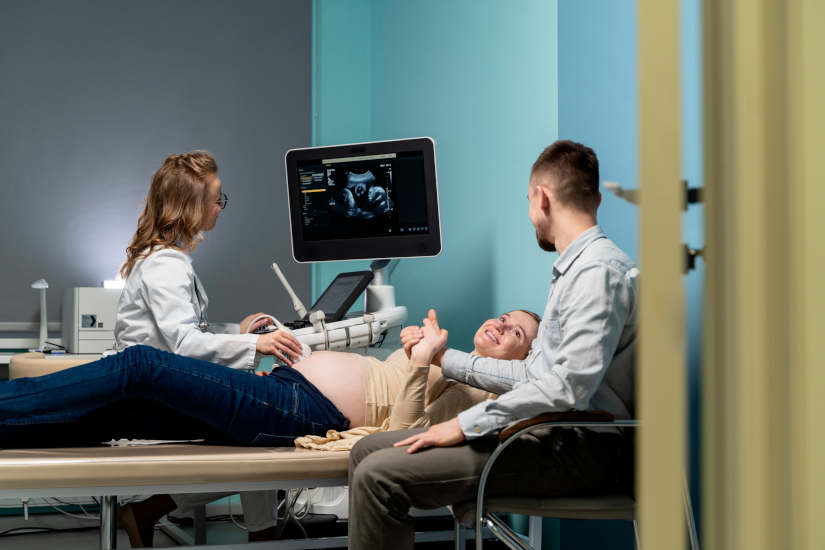
by 4D Medical | Oct 23, 2024 | Medical equipment
An ultrasound, also called a sonogram or ultrasound, is an ultrasound scan. diagnostic imaging test that uses the sound waves to create images of organs, tissues and internal structures of the organism. It is a simple, safe and non-invasive technique which allows health professionals to analyze and observe the inside of the body without surgery. In other words, it is a diagnostic technique that no need to make any incisions or use ionizing radiationas in the case of the X-rays.
It stands out for being a comfortable, economical and painless test. It is mainly used for diagnose various medical conditionshealth monitoring and development of the baby during pregnancy and guide certain medical proceduressuch as biopsies, tissue extraction, and other techniques that require the use of image diagnosis.
How does an ultrasound scan work?
An ultrasound is a technique that emits a series of mechanical waves that have a frequency above the hearing ability of the human ear and allow create two-dimensional and three-dimensional images. These images are called sonograms and are performed with specific equipment. The medical devices that allow these diagnoses to be performed are ultrasound scanners. They have a tool rod-shaped which is known as transducer and is responsible for detecting the waves produced in the different tissues, organs and fluids of the body. These are then picked up again by the transducer and converted into electrical signals.
In order to analyze the waves, a special gel on the skin in the area to be examined. Through the use of a computer, these signals are processed to create a real-time image of internal structures of the organism. The images produced are visualized on the screen and provide information on movements that are occurring, the distance at which a fabric is locatedas well as its size, shape and composition.
Types of ultrasound scans: Uses and main differences
We can find different types of ultrasound: ultrasound in pregnancy, diagnostic medical ultrasound, guided ultrasound, as well as 3D and 4D ultrasound. Let's see their main differences:
Ultrasound in pregnancy
Ultrasound in pregnancy, also known as obstetrical ultrasound, is a diagnostic imaging test that provides the visualization of the fetus inside the mother's uterus. As it is an ultrasound technique that does not involve radiation, it is a safe technique for mother and baby.
What is fetal ultrasound used for?
It allows analysis of the baby's growth, health and general development. In particular, it provides the following information:
- Confirmation of pregnancy.
- Verification of multiple pregnancy (twins and triplets).
- Knowledge of the gestational age. That is, how far along the pregnancy is.
- Analysis of the sizethe position of the fetus, the growth and the sex of the baby.
- Diagnosis of congenital defects in the various parts of the baby's body, such as the brain, heart or spinal cord.
- Study of the existing amount of amniotic fluid. It is essential for the development of the baby's lungs and bones, as well as to protect the baby from injury.
- Identify problems in the placenta, uterus, cervix and ovaries of the mother.
- Information on possible signs that could indicate an increase in the number of risk of Down syndrome.
Diagnostic medical ultrasound
Diagnostic medical ultrasound is essential for the diagnosis and treatment of study of diseases or possible health problems in the patient. This type of test is used when a person detects certain symptoms that are important to analyze. Using this type of ultrasound, medical professionals can study various medical conditions involving different parts of the body. Depending on the area to be analyzedwe can distinguish different modalities of diagnostic medical ultrasound scans:
- Abdominal ultrasoundIt focuses on the observation of the internal structure of the abdomen. It allows to analyze organs such as the pancreas, kidneys, liver, gallbladder and spleen.
- Vaginal ultrasoundVaginal ultrasound: This test is used to analyze the uterus, ovaries, endometrium, cervix, fallopian tubes and pelvic area of the woman. Vaginal or tansvaginal ultrasound is used to detect possible gynecological conditions, such as the presence of ovarian cysts, fibroids and uterine fibroids, abnormalities in the menstrual cycle, certain types of infertility and pelvic pain.
- Rectal ultrasoundRectal examination: Consists in the evaluation of the rectum to study the prostate and bladder function.
- Renal ultrasoundKidney ultrasound: Evaluates the condition of the kidneys, both the size, location and shape, as well as their adjacent structures. This type of ultrasound helps detect the presence of tumors, cysts and renal obstructions.
- Breast ultrasoundIt is used to detect abnormalities in the breast tissue, such as the presence of cysts. It is often used as a backup technique after mammography.
- Cervical and thyroid ultrasoundAnalyzes the functioning of the thyroid gland, which is located in the neck. It is essential to study possible health problems that may arise, such as the appearance of nodules, cysts and structural alterations. It is also used to analyze the salivary glands.
- Doppler or vascular ultrasoundThe speed and direction of blood flow in the heart and blood vessels can be analyzed with this ultrasound. It allows to measure the blood circulation in the different organs of the body, as well as the neck, arms and legs. It is an essential test to diagnose possible blockages, narrowing and problems in the circulatory system.
- Muscle ultrasoundMusculoskeletal ultrasound: This ultrasound is also called musculoskeletal ultrasound. It explores the different muscles, tendons, ligaments, bursae, cartilage, joints and bone surfaces, making it possible to detect the presence of injuries, tendinitis, degenerative problems and other conditions of the muscular tissues.
Guided ultrasound
Guided ultrasound is a technique used for the diagnosis and treatment of development of ultrasound-guided procedures. It is used to guide health care professionals in the Performing tissue biopsies, tissue aspiration and removal, catheter placement, abscess drainage and percutaneous injections.. This technique consists of the introduction of a needle or catheter into the area of the body to be tested. Transducer advancement is controlled in real time, allowing the needle to be steered for more accurate medical diagnosis.
This type of ultrasound can be performed in two ways: through devices adapted to the probes or through the hands-free techniquewhere the professional holds the needle with one hand and the probe with the other hand.
3D and 4D ultrasound
The technological advances in the field of medicine allow the images generated in an ultrasound scan to be displayed in 3D and 4D. The 3D ultrasound scans emerged at the end of the 1990s and offer a wide range of high-resolution static images with a three-dimensional perspective. Currently, the systems used are based on mechanical transducerswhich make it possible to obtain images in the three perpendicular planes. Thus, in the image, the following can be seen transverse, longitudinal and coronal sections. As for the 4D ultrasound scansincorporate a technology that captures motion in real timeThis provides a closer and more realistic reproduction of what is happening inside the organism.
In which cases are 3D and 4D ultrasound scans used?
The 3D ultrasound scans are used in pregnancy and in various specialties. such as gastroenterology, gynecology and obstetrics, breast and uterine pathology and cardiology. It also plays an essential role in vascular surgery, urology, rheumatology and traumatology.
For their part, the 4D ultrasound scans are used during pregnancy to analyze the baby's development. By providing real-time motion, shows the gestures and movements made by the baby inside the uterus and also serves to detect possible problems and anomalies. It is recommended to be performed around the 28th week of gestation.This is the moment when the fetus is more developed and its features are more similar to those of a newborn. At the same time, in 4D ultrasounds, it is essential that there is a sufficient amount of amniotic fluid. This is a fundamental aspect for the ultrasound waves to be transmitted properly. Otherwise, the image will be displayed with lower quality, so it would not be advisable to use this technique.
However, it should be noted that 3D and 4D ultrasound scans are not a substitute for follow-up ultrasound scans. which must be performed at 12, 20 and 32 weeks of gestation. Therefore, it is a complementary test for more information on fetal growth.
Innovations in the field of ultrasound
In the field of diagnostic imaging, the ultrasound scanners are the devices used to perform ultrasound scans. In recent years, numerous advances have led to the development of a new type of ultrasound system. medical equipment adapted to new needs of medical centers, hospitals and health professionals.
In addition to the traditional ultrasound scanners that allow a simple and safe test to be performed, the following have emerged new generation ultrasound scanners that use the latest technology and are equipped with artificial intelligence. This type of ultrasound scanners are portable and are characterized by the fact that they can be used completely remotely. In this way, professionals do not have to be present in medical centers and can reach many more regions and patients. Undoubtedly, a a key aspect to boost telemedicine and create fast, complete and accurate diagnostics.
In conclusion, ultrasound scans are one of the most important The most widely used medical diagnostic imaging techniques in use today. This is because it is an easy, safe and non-invasive test that is very useful for diagnosing certain medical conditions, for analyzing the development of the baby during pregnancy and also as a support technique for other procedures. In most cases, ultrasound is part of the first diagnosis to then evaluate how to proceed and what other tests should be performed when treating an ailment or disease.
Kiko Ramos
CEO of 4D Médica. Expert in marketing and distribution of medical equipment.



